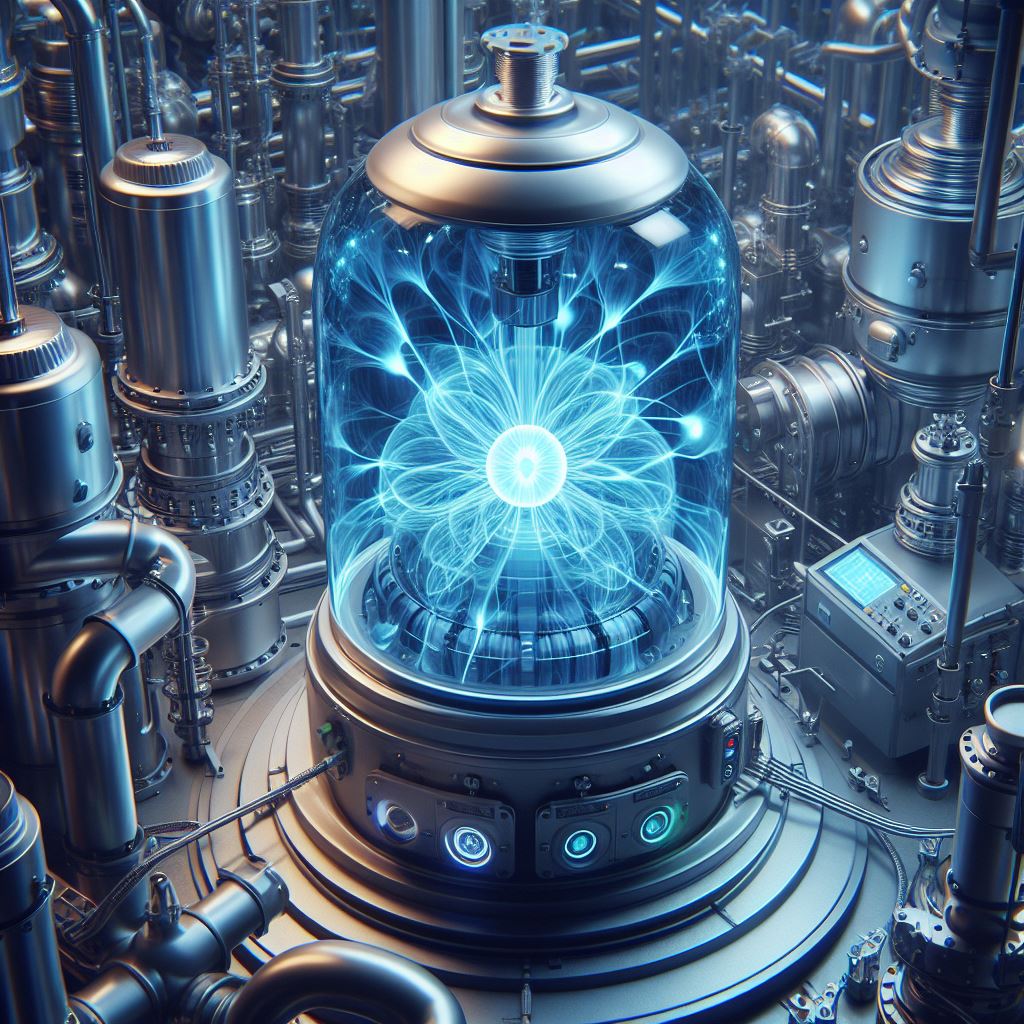
Nuclear fusion is a beacon of hope and potential in our quest for sustainable, eco-friendly energy solutions. Fusion, in its essence, is a process where two lighter atomic nuclei merge to form a heavier nucleus. This remarkable phenomenon isn’t just a marvel of the natural world, seen powering stars like our Sun. Still, it also holds the key to revolutionizing how we produce energy on Earth.
Here’s a glimpse of what you’ll learn on Nuclear Fusion:
- What is nuclear fusion and its definition.
- Key differences between fusion and fission.
- Main types of fusion reactions and how they work.
- Current challenges in practical fusion energy.
- Prospects of fusion research and development.
Join us on this enlightening journey to understand why fusion could be our world’s ultimate source of clean energy.
Are you looking for a chemistry or physics tutor? Enter “chemistry tutor Glasgow” or “physics teacher Sheffield” on your preferred tutoring platform, such as meet’n’learn, to find a teacher who can meet your specific needs.
If you thrive in group learning environments, search “physics classes London” or “chemistry lessons Manchester” online to discover local schools offering chemistry lessons.
What is Nuclear Fusion and its Definition
Harnessing fusion energy is far from straightforward. Achieving fusion requires creating conditions of extreme temperatures and pressures akin to those found in the cores of stars. This is necessary to overcome the natural repulsive forces between the positively charged atomic nuclei. It’s a challenging feat that has eluded scientists for decades, but the pursuit is fueled by the promise of what fusion could offer.
Imagine a world powered by an energy source with an abundant fuel supply derived primarily from water and lithium. Fusionenergy presents a future with no greenhouse gas emissions, eliminating a significant contributor to climate change. Unlike its counterpart, nuclearfission, fusion energy doesn’t produce long-lived radioactive waste. Moreover, it poses no risk of nuclear meltdown or proliferation, making it a safer and more stable energy alternative.
The pursuit of fusion energy isn’t just for scientists and engineers; it’s a topic that ignites curiosity and learning in everyone from tutoring sessions to science classes.
Fusion vs Fission: What’s the Difference?
In nuclear reactions that unleash energy, two processes stand prominently: fusion and fission. As seen in the Sun and stars, fusion involves merging lighter nuclei to form a heavier nucleus, unleashing tremendous energy. Fission, on the other hand, found in nuclear power plants and atomic bombs, involves splitting a heavy nucleus into lighter nuclei, also releasing a significant amount of energy.
Both processes yield substantial energy but differ in fuel sources, environmental impact, safety, and cost. Fusion boasts an almost limitless fuel supply from water and lithium, minimal ecological impact, and enhanced security with no risk of meltdown. Although currently more developed technologically, Fission deals with challenges like radioactive waste, higher safety risks, and finite fuel based on uranium or plutonium. Understanding these differences is crucial in fields like nuclear physics and is a key concept often explored in tutoring sessions and science lessons.
Discover the fundamentals of Electrochemistry, Redox Reactions, and Balancing Chemical Equations.
How Fusion Works: The Basic Principles
Mass defect and binding energy are at the heart of fusion. When lighter nuclei merge, the mass of the resultant nucleus is slightly less than the sum of its parts. As Einstein’s famous equation E = mc^2 explains, this ‘missing’ mass is converted into a vast amount of energy. A quintessential example of a fusion reaction is the proton-proton chain in stars or the deuterium-tritium reaction in experimental reactors, where the fusion of hydrogen atoms forms helium, releasing energy that powers stars and holds potential for future energy solutions.
How Fission Works: The Basic Principles
Fission operates on a different principle; the neutron-induced splitting of heavy nuclei like uranium-235 or plutonium-239. When a neutron hits the nucleus of these atoms, it splits into smaller nuclei, releasing energy from additional neutrons and triggering a chain reaction. This reaction, again governed by E = mc^2, shows how a slight change in mass can lead to significant energy release. Fission is the fundamental process in nuclear power plants, where controlled chain reactions generate electricity, and in atomic bombs, uncontrolled reactions lead to massive explosions.
Fusion vs Fission: A Comparison Table
To briefly summarize the differences between fusion and fission, here’s a comparison table:
|
Criteria |
Fusion |
Fission |
|
Energy Output |
High, with the potential for greater efficiency |
High, but less than fusion |
|
Fuel Availability |
Abundant (water, lithium) |
Limited (uranium, plutonium) |
|
Environmental Impact |
Minimal, no greenhouse gases |
Radioactive waste, potential contamination |
|
Safety |
No meltdown risk, safer overall |
Meltdown risk, higher safety concerns |
|
Cost |
The high initial investment, lower operational |
Lower initial cost, higher operational |
This table provides a clear comparison that benefits students and learners in various educational settings, including tutoring sessions and science classes.
Learn about chromatography and solutions and mixtures.
Fusion: The Main Types and How They Work
Fusion, a process integral to the universe, manifests in distinct forms on Earth. Thermonuclear fusion replicates the sun’s power, creating energy by fusing hydrogen into helium. Inertial confinement fusion, a laboratory marvel, utilizes intense lasers to compress and heat fuel, initiating fusion. Meanwhile, magnetic confinement fusion employs robust magnetic fields to control hot plasma, a crucial element for fusion. Each method, with its specific challenges and innovations, significantly contributes to our pursuit of fusion as a viable energy source.
Thermonuclear Fusion: The Power of the Sun and Stars
Thermonuclear fusion is nature’s way of powering stars, including our Sun. It involves fusing hydrogen nuclei into helium under immense heat and pressure, central to star life cycles. Replicating this on Earth poses significant challenges, requiring extreme temperatures and pressures.
- Replicating the Sun: Aiming to mimic stellar fusion processes.
- High Energy Potential: Offers significant energy output.
- Extreme Conditions Required: Demands advanced technology to achieve necessary temperatures and pressures.
Inertial Confinement Fusion: The Power of Laser Beams
Inertial confinement fusion aims to achieve fusion by directing intense laser beams onto a tiny fuel pellet. This method rapidly compresses and heats the fuel, initiating fusion reactions. Facilities like the National Ignition Facility showcase the potential of this technique. Although technically challenging and expensive, its ability to create high-energy-density environments is a promising avenue for energy research.
- Laser Compression: Utilizes high-intensity lasers for fuel compression.
- National Ignition Facility: A key example of this fusion approach.
- Energy Density Advantage: Provides a path to high energy density, although it faces cost and technical challenges.
Magnetic Confinement Fusion: The Power of Magnetic Fields
Magnetic confinement fusion uses strong magnetic fields to contain and control hot plasma, a state of matter essential for fusion reactions. Devices like tokamaks and stellarators exemplify this approach, aiming to maintain stable plasma for sustained periods. Despite its complex engineering challenges, this method offers a continuous operation potential, making it a promising candidate for future fusion-based power generation.
- Plasma Containment: Magnetic fields stabilize the plasma.
- Tokamaks and Stellarators: Examples of magnetic confinement devices.
- Sustainable Operation: Offers potential for continuous fusion, though engineering complexities remain.
All you need to know about vitamins and minerals.
Fusion Energy: Today’s Progress and Tomorrow’s Promise
Fusion energy research, a blend of science and engineering marvels, has been making strides, though it faces some tough challenges:
- International Thermonuclear Experimental Reactor (ITER) Project: A beacon of international collaboration aiming to prove fusion’s potential for clean energy.
- Chasing Break-Even and Ignition: Scientists are working hard to reach the point where fusion releases as much energy as it consumes, known as the “break-even point.” Another crucial goal is to achieve the “ignition point,” where fusion becomes self-sustaining.
- The Dream of a Fusion Power Plant: Envision a world powered by fusion energy; it’s still a work in progress, but we’re getting closer.
Fusion’s Future: A Glimpse into What Lies Ahead
Fusion energy isn’t just a scientific dream; it’s a potential game-changer for our world. Here’s what the future might hold:
- Technological Innovations: New materials and advanced tech are crucial to making fusion energy a reality.
- Economic and Social Factors: Fusion tech is expensive now but promises a big payoff; a world with abundant clean energy. It’s also gaining public interest as an excellent, futuristic energy source.
- Tackling Climate Change: Fusion could be our secret weapon against global warming, offering a near-limitless, eco-friendly energy solution.
Remember, fusion isn’t just for scientists and engineers. It’s a topic worth exploring in tutoring sessions, science classes, and at home. Why? Because it’s about our future!
Need help with biology topics? Explore our extensive collection of biology educational blog posts designed to simplify complex concepts for you. Whether it’s photosynthesis, osmosis, the intricacies of green algae, understanding bacteria and viruses, or delving into the fascinating world of genetics and cells, our resources have got you covered. Expand your knowledge and enhance your learning journey with us today.
Fusion Energy: The Clean Power of Tomorrow
As we wrap up our journey through the fascinating world of nuclear fusion, it’s clear that this isn’t just a high-level science concept; it’s a potential game-changer for our energy future. Fusion offers a path to a world where our energy is clean, abundant, and safe.
The road to harnessing fusion energy is filled with challenges, but it’s a journey worth taking. It’s not just scientists and engineers who need to understand fusion; it’s a subject for students, teachers, and anyone interested in the future of our planet. That’s why discussing fusion is so important in tutoring sessions and science classes. It’s not just about the science; it’s about understanding the potential for a better, cleaner future.
So, keep exploring, whether you’re a student, a teacher guiding curious minds, or just someone fascinated by the promise of fusion energy. Ask questions in your lessons, discuss with your tutors, and never stop learning!
Read more topics and expand your chemistry horizons! Our World of Chemistry offers a plethora of free educational blogs.
Frequently Asked Questions About Nuclear Fusion
1. What Exactly is Nuclear Fusion?
Nuclear fusion is when two light atomic nuclei merge to form a heavier nucleus, releasing significant energy. It’s the same reaction that powers the sun and stars.
2. How is Fusion Different from Fission?
Fusion combines atomic nuclei, while fission splits them. Fusion releases more energy and is cleaner, as it doesn’t produce long-lived radioactive waste like fission.
3. Why is Fusion Energy Considered Clean?
Fusion energy is clean because it produces no greenhouse gas emissions and minimal radioactive waste. Its fuel sources, like hydrogen isotopes deuterium and tritium, are abundant and eco-friendly.
4. Can Fusion Energy Be Used in Power Plants?
Yes, the goal is to use fusion energy in power plants. This would offer a virtually limitless energy source with a minimal environmental footprint, but the technology is still in the developmental stage.
5. What Are the Main Challenges of Fusion Energy?
The main challenges include achieving and maintaining the extremely high temperatures and pressures needed for fusion and ensuring the process releases more energy than it consumes.
6. Is Nuclear Fusion Safe?
Yes, compared to fission, nuclear fusion is much safer. There’s no risk of a nuclear meltdown, and it produces far less long-term radioactive waste.
7. How Close Are We to Having Fusion Power?
We’re making progress, but practical fusion power is still years away. Projects like the ITER (International Thermonuclear Experimental Reactor) are crucial to making fusion a reality.
8. Can I Study Fusion in High School?
Absolutely! Fusion is a great topic for science classes. You can explore the basics with your tutor or in physics lessons.
Are you interested in other subjects? Read top free study guides for Biology, English, French, and Music.
References:
1. IAEA
2. Britannica
3. Wikipedia



